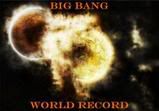Saturday, February 7, 2009
Bloggers can then display widgets on their sites which show MyBlogLog online community members who have recently visited their page. MyBlogLog communities revolve around an individual blog registered by that blog's author. Communities that are particularly popular, have the most members or that are brand new are featured on the MyBlogLog Communities page. Members can also find communities via searches for key words or tags.
MyBlogLog members are displayed and searchable in a largely similar fashion to MyBlogLog communities. Featured, popular and new members are displayed on the MyBlogLog members page.

Labels: do it yourself, free link exchange
 (Click for more pictures here).
(Click for more pictures here).
Boracay, the three-syllable word is said to have come from the local word borac, meaning cotton, an obvious reference to the beach sand's color and texture. When Doug and I went there, it was few weeks before the typhoon Frank hit the island, sometime between June and October. During this time the resort and restaurant prices are cheaper than at peak season that starts early November and ends around May, and the island is at a more relaxing pace.
They said that it is dumb bell-shaped, perhaps they've seen it from above but for us who were traveling and sailing, it was several buses and ferries ride from Toledo to Kalibo, motor cab to Caticlan jetty, from there it takes 15 to 20 minutes, to get to Boracay.
At the jetty, we're hustled by fixers of the over 300 beach resorts who chanted the same spiel, theirs is located at the White Sand Beach. Thanks to this lady fixer, she billeted us at Alice in Wonderland Resort, non-beachfront, between Station 2&3, main White Sand Beach. The resort offers 35 well appointed air-conditioned cottages with queen sized bed and pull-out couches, private toilet and bath, your own veranda with a hammock awaiting your arrival. In the middle of its well-groomed grounds is a quaint two-story tree house. It has a swimming pool and an area for the guests to play table table tennis, billiards, chess and darts. One could sit at the bar and restaurant and enjoy the freshest seafood 24 hours while looking at the sea before you.
Doug wonder at this last detail after reading the resort's brochure. How could we ever look at the sea? We're across the road before the beach inside the resort compound! That's a joke, a roaring starter for our stay in Boracay.![]() (Continues to Cotton Beach 2)
(Continues to Cotton Beach 2)
Labels: travels
Friday, February 6, 2009
You have to Add these widgets and hacks to your blog to optimize it for better Reading, Easy navigation and to get most out of your blog.
Here I am listing 7 Must-have Widgets and Hacks for your blog.With these widgets and hacks, your blog traffic will increase, Your readers will find easy to find everything in your blog, Your blog will look professional, etc.
If you are using your blog to make money, you can also improve your earnings by these Widgets and Hacks. So, read out the full article and apply everything here in this article to get most out from your blog.
Labels: do it yourself
Monday, February 2, 2009
We traveled 1.5 hours more to Balingoan, and took M/V Yuhum, the hourly scheduled ferry crossing the channels of Mindanao Sea, and later docked at the port in Guisiliban. It was lunchtime when we landed in Camiguin, and we decided to nourish ourselves at the nearby eatery. Doug and I ordered in Cebuano, since it is spoken freely inside the eatery, sutokil (a combo of fishes grilled, souped, and soaked in vinegar), kan-on (Valencia rice), and ginamos (salted fish) as side dish. There was an old couple at the next table talking ancient language that I assumed they're natives of the island. I asked them for Mambajao, the capital town, which they told us to be at the northern part. After we had our orders, and surprisingly in a snap, we hired a motor cab to Mambajao.
We're booked at the Paras Beach Resort, the most popular accommodation, just a short ride from the travel agency in Mambajao. The rooms are fully air-conditioned and with private shower and bath. We chose a room closest to the beach, to watch a breathtaking sunset, and not to be missed also the swimming pool at the middle of the resort. Our dinner wasn't a problem, the resort has an in-house resto that is open from 6am to 12mn.
If it wasn't for Lent that we went there, we could have avail of the fun tours they offer. Among the choices are the whole day island tour of volcanoes, and the white sandbar (a three minute boat ride from the Resort), and sightseeing the waterfalls, island hopping, and snorkeling in the Sunken Cemetery---this I've second thought, if given the chance. They also have water activities such as jet-ski, banana boat, para-sailing, and scuba diving.
Waking up to a fine April sky was perfect for Panaad, the first thing in our itinerary. We hired a motor cab, the common transport available in the island, to visit the old ruins of San Roque church, convent and belfry in Gui-ob. These are the remnants of the eruption of Old Vulcan Daan in 1871 that almost wiped out the entire town of Catarman. The thick century old walls that partly exposed the ruins are also remainders of the second Spanish settlement in 1697. When we came back from the ruins, we stopped at the beach besides the road to look at the towering cross in the sea that marked the Sunken Cemetery.
The next would be climbing the Old Vulcan Daan, it is the landmark of Panaad, the volcano with stiff drop-off of 7,080 meters above sea level. At the foot, we're told to buy 14 candles appointed for the stations above, and we've seen also novelty shops for buying souvenirs later. The Via Cruses is trekking the old volcano slope. The 14 Stations of the Cross have life-sized statues, depicting the passion, death, and resurrection of Christ, that dotted the trail to the peak. At last, we crested the fourteenth station and found a sepulcher carved out of volcanic rocks, where they usually held mass for the Lenten season. The view was impressive. A thousand feet below lay Mambajao capital town of Camiguin, but that was about it. The ascent was Christ-like, as if the whole ordeal in Golgotha was happening to us. However, praying from sepulcher, we staggered down and bought our souvenir t-shirts and some Vjandep pastels, these are soft buns stuffed with sweet cream of different flavors.
The best way to resurrect the aching muscles would be a relaxing dip at the Ardent hot spring. It is a natural Jacuzzi at 400 Celsius. Here is very interesting information, the heated pool is collected water running down the vents of Hibok-Hibok volcano, and this you wouldn't mind. It has therapeutic effects on our aching muscles. The place has picnic huts and tables in the beautifully landscaped gardens, and there is also a resto that catered to our already famished stomachs.
The province is a pear shaped volcanic island in the northern tip of Mindanao. The island is said to be "born of fire." It has seven volcanoes unmatched in the world that eruptions have created wonders and historic ruins. Its pristine and rustic setting marked it as one of the top 25 tourist destinations in the country, and the seventh diving spot in the world.
I should say, it is a tiny island of lush forests as evidenced by its eternal hot and cold springs, the splendid Catarman ruins, and the idyllic life. It is a virtual paradise, a beauty entirely locked in eternal embrace of the sea, an unfazed by the pressures of today's hurried way of life. The experience we had in Camiguin was never enough that someday, Doug and I promised to go back there to re-discovery this island of fire.
Labels: travels

Bloggers, mostly newbies like me, often think that blogging is easy stuff. But now that I'm into it I would say it isn't. When I started, I was confronted right away with what to post in my blog. Not to mention that writing is one of my frustrations, I've a hard time writing down my thoughts, or whatever is upthere in my brain. This can't be called writer's block since I haven't written any. But I prevail! When you have nothing to do, you're out of job, blogging is an alternative.
It doesn't only win over your difficulty in writing but it is said to give you money! Very well then! This is what I badly needed at this time. But it isn't as easy as expected, I need to attract more readers into my blog, and beg them to give me those precious backlinks, so that the advertisers would notice traffic for their products and lastly monetized the whole process.
But this doesn't end here, some advertisers don't pay as promised by their campaigns, at the rate of being called stupid. They set their standards more often as the weather, their easy is clincher for me though. I would've second thought for this one! I think I'm fair with my deals.
My blogging experience isn't as easy as I expected but this doesn't mean it is same with others. To each his own!
Labels: diary
Sunday, February 1, 2009
The purpose of this documentation is to amplify the interplay of realities presented, met and subsequently addressed by the Upland Development Programme in its struggle to facilitate the embankment of its mission to the lives of upland folks in southern Philippines.
After eight years, UDP has threaded the dreams of improving lives in remote terrains found in mountainous topographies. Despite the many pitfalls and setbacks, it continues to struggle and reach out to better the lives of the upland folks and communities. This is its story woven and entangled by the challenges, failures and successes of true people engaging to make a stake at progress...
Pictures of upland realities in yesterdays struggle
The traces of the past are essential tools in dealing with the future. It is the memory of lives spent hurdling with difficulties. Sometimes it posts barriers for improvement, making its trail strongly felt to burden the present in the struggle to reach a better future. The upland is practically the most difficult road to traverse. Its remoteness may prove to be unfriendly and hard to transgress...most of the time; it is left out and hardly awakens by progress.
This is an attempt to unveil the past pictures of upland communities…the struggle of its people on the road to rehabilitation and positive changes.
An abstract of the lives of eight villages scattered in the hilly and mountainous terrains in southern Philippines will somehow paint a replicating picture of common realities lived by and survived by upland folks. Let us try to imagine the lives of people resplendent with mediocrity, simplicity, and scarcity by journeying into the flashes of their past before the UDP and other key players for progress started working on the new pictures of their struggles…
Synchronizing goals through community formation
another facet of this documentary is snapshots of realities found in the many faces of upland lives when the UDP started its journey in the realm of its mission and goals.
We will attempt to immerse and become acquainted with the endeavors of initiating little changes in communities as a means of staking bigger and more practical schemes for development. The upland folks are the major stakeholders of progress who are rarely afforded the opportunity to grow beyond the confines of their ordinary and customary day-to-day struggles. Yet when the UDP alternative and more systematic stance against all forms of scarcity became felt in their communities, motivating changes gradually beat common insecurities and apprehensions.
The Stories:
- hustling over veggies
- the rape of a forest
- going bananas
- striptease to progress
- nuts over rats
- a climb to flourish
- the tale of two villages
- the rope of life
Labels: short stories












































